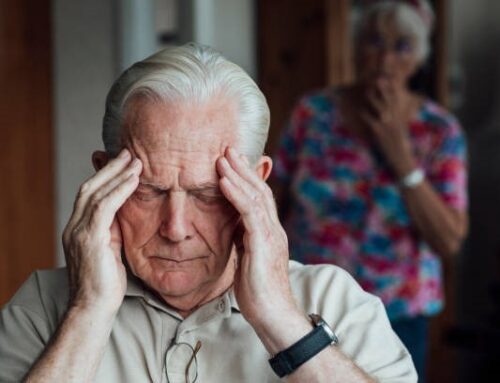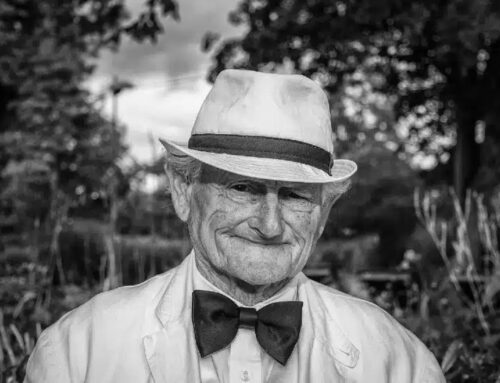Original article from Science Based Medicine
We are living longer, but not much better. The average lifespan has increased, but the limit has not. 95% of people are dead before 100, and almost no-one reaches 115. The years at the end of life are filled with suffering and illness. Conventional wisdom tells us we will all experience a decline as we age, and we will all eventually die. Ben Franklin said nothing is certain but death and taxes. But what if death is not certain? What if we could stay healthy and live forever? Science is investigating some intriguing clues suggesting that aging and death may not be as inevitable as we thought.
 David Sinclair believes aging is a disease, the most common disease, and he believes it should be aggressively treated.
David Sinclair believes aging is a disease, the most common disease, and he believes it should be aggressively treated.
His book Lifespan: Why We Age and Why We Don’t Have To was published in September 2019. A PhD professor and researcher at Harvard Medical School and co-founder of the journal Aging is well informed. He explains how recent scientific breakthroughs have reversed the effects of aging in animal models. He has applied many of the scientific findings to his own life.
No limits?
He says, “there are no biological, chemical, or physical laws that say life must end.” There are organisms that do not age. Bristlecone pine cells do not undergo any decline in function with age. In the freshwater polyp Hydra vulgaris there are no significant differences between the very young and the very old. Certain jellyfish known as “immortal jellies” are apparently capable of living forever. The Greenland shark is estimated to live over 500 years and doesn’t even reach sexual maturity until it is 150 years old. Imagine a prepubertal 150-year-old human! A perpetual teenager?
Longevity genes?
There is no single gene that causes aging, but science has identified more than two dozen “longevity” genes that have demonstrated the ability to extend average and maximum life spans in many organisms. They also make life healthier, and can be thought of as “vitality” genes. These genes are found in every organism: trees, yeast, worms, whales, and humans.
Sirtuins are epigenetic regulators. There are seven sirtuins in mammals. They mute the chronic inflammation that drives many chronic diseases like atherosclerosis, arthritis, and asthma. Studies in mice have shown that they improve DNA repair, boost memory, increase exercise endurance, and help the mice stay thin. Nicotinamide adenine dinucleotide, or NAD, is required by sirtuins. TOR (=Target of Rapamycin) is a complex of proteins that regulates growth and metabolism. AMPK (adenosine monophosphate-activated protein kinase) is a metabolic control enzyme that plays a role in cellular energy homeostasis; it responds to low energy levels.
Sirtuin-activating compounds have been identified, such as fisetin and butein. Resveratrol outperforms both of these. It is considered a calorie-restriction mimetic. It has been shown to protect against several diseases, to extend lifespan in several species, and to make human cells resistant to DNA damage in the lab.
NMN, nicotinamide mononucleotide, increases NAD levels. It has been shown to extend life and protect against various diseases in mice; it is still being investigated.
Metformin, the diabetes drug, impacts many diseases and extends life. It activates AMPK, makes more NAD, and turns on sirtuins and other anti-aging defenses.
Experimental evidence
He describes many fascinating experiments in organisms from yeast to mice. Some of his many examples:
- Researchers were able to speed aging in mice:
We’d simply broken the mice’s DNA in places where there aren’t any genes and forced the cell to paste, or “ligate,” them back together. Just to make sure, later we broke the DNA in other places, too, with the same results. Those breaks had induced a sirtuin response. When those fixers went to work, their absence from their normal duties and presence on other parts of the genome altered the ways in which lots of genes were being expressed at the wrong time.
- In another experiment, mice were given NAD to increase the activity of sirtuins. They became ultra-marathoners and exercised so enthusiastically that they broke the lab’s treadmill.
- NMN has anecdotally restored fertility in aged women.
His hypothesis about the cause of aging
His extensive knowledge of research findings led him to this conclusion:
Whenever epigenetic factors leave the genome to address damage, genes that should be off, switch on and vice versa. Cells malfunction. Chaos ensues…aging is caused by overworked epigenetic signalers responding to cellular insult and damage.
He believes a loss of information is the singular reason why we age. Not just digital information, but epigenetic information that is analog rather than digital. He characterizes the genome as a computer and the epigenome as software. The genetic information is the same in every cell; the epigenome is what instructs a cell to develop into a kidney cell rather than a heart cell. His definition of epigenetics differs from the generally accepted one, which defines it as heritable phenotype changes that can be passed on to subsequent generations.
A bit of adversity or cellular stress is good for our epigenome because it stimulates our longevity genes. It activates AMPK, turns down mTOR, boosts NAD levels, and activates the sirtuins—the disaster response teams—to keep up with the normal wear and tear that comes from living on planet Earth.
Sinclair calls it hormesis, the idea that a low dose (of stress) can be beneficial while a high dose is harmful. I’m not entirely convinced that this concept is applicable to aging. Some reports of hormesis have been questioned; it is a real phenomenon, but it may not be common or important.
Smokers age people faster. Smoking causes DNA damage and keeps the repair crews working overtime, resulting in epigenetic instability and aging. Sinclair says non-smokers are bathing in DNA-damaging chemicals too. Even breathing can damage DNA through air pollution, and we are exposed to many DNA-damaging chemicals in plastics, dyes, solvents, pesticides, hydraulic fluid, many foods, background and medical radiation, etc.
Longevity genes are activated by stress, but stressors can activate longevity genes without damaging the cell, through exercise, intermittent fasting, low-protein diets, and exposure to hot and cold temperatures. These benefits can also be mimicked by a single pill. He has applied these concepts to his own life. He is doing those things and taking those single pills – several of them (see below).
He acknowledges that the research is preliminary: “It will take some time to sort out which of these molecules are best, when, and for whom. But we’re getting closer every day.”
According to Sinclair, nine hallmarks of aging have been identified:
- Deregulated nutrient sensing
- Loss of proteostasis
- Altered intercellular communication
- Telomere attrition
- Mitochondrial dysfunction
- Stem cell exhaustion
- Cellular senescence
- Epigenetic alterations
- Genomic instability (DNA)
Addressing one of these might slow down aging. If you address all of them, you might not age. But we can’t be certain there aren’t more hallmarks that have not yet been identified.
Sinclair says,
There is nothing wrong with using the hallmarks to guide interventions. We can probably have a positive impact on people’s lives by addressing each of them. It’s possible that interventions aimed at slowing telomere deterioration will improve people’s long-term well-being. Maintaining proteostasis, preventing deregulation of nutrient sensing, thwarting mitochondrial dysfunction, stopping senescence, rejuvenating stem cells, and decreasing inflammation might all be ways to delay the inevitable. Indeed, I work with students, postdocs, and companies around the globe that are developing solutions to each one of these hallmarks and hope to continue. Anything we can do to alleviate suffering we should do…But we’re still building nine dams on nine tributaries…Together we can build a single dam – at the source.
His predictions
It may be possible to vaccinate against aging.
Once you recognize that there are universal regulators of aging in everything from yeast to roundworms to mice to humans . . .. and once you understand that those regulators can be changed with a molecule such as NMN or a few hours of vigorous exercise or a few less meals . . . and once you realize that it’s all just one disease . . .it all becomes clear: Aging is going to be remarkably easy to tackle. Easier than cancer.
Maybe the aging process can be reset, like removing the scratches that prevent a damaged DVD from being read. Experiments with stem cells and cloning are intriguing. Gene therapy shows great promise but there are ethical concerns. Genetic analysis and new technologies are making great strides.
if even a few of the therapies and treatments that are most promising come to fruition, it is not an unreasonable expectation for anyone who is alive and healthy today to reach 100 in good health.
But he acknowledges that scientific proof will require double-blind placebo-controlled trials.
The first part of the book provides valuable information about cutting-edge research. The latter part of the book descends into speculations and opinions about global warming, overpopulation, food security, GMOs, poverty, CRISPR, research funding, jobs, the cost of health care, euthanasia, and various other political and ethical issues.
The author’s personal regimen
The final chapter includes a brief subsection “What I Do.” He doesn’t say everyone should do what he does. He makes no recommendations for others except “Eat fewer calories”, “Don’t sweat the small stuff”, and “Exercise”.
But he argues that if he does nothing, he will age and die, so he has nothing to lose by trying unproven treatments, and he has personally chosen to do these things:
- He takes a gram each of NMN, resveratrol, and metformin daily.
- He takes vitamin D, vitamin K2, and 83 mg. aspirin.
- He limits sugar, bread, and pasta intake, doesn’t eat desserts, and avoids eating meat from animals.
- He skips one meal a day.
- He gets frequent blood tests to monitor biomarkers; if not optimal, he tries to moderate them with food and exercise.
- He stays active, goes to the gym, jogs, lifts weights, uses the sauna and then dunks in an ice-cold pool.
- He doesn’t smoke.
- He avoids microwaved plastic, excessive UV exposure, X-rays, and CT scans.
- He tries to keep environmental temperatures on the cool side.
- He maintains a BMI of 23-25.
He plans to fine-tune his regimen as research evolves. He acknowledges “It’s impossible to say if my regimen is working…but it doesn’t seem to be hurting.” He says he feels the same at 50 as he did at 30.
You could follow this or similar regimens all your life and never know for sure if it was helping; and if it was, which components of the regimen were responsible.
Conclusion: Intriguing, but no definitive evidence
The experimental findings in other organisms are very impressive, but there is no actual evidence that they can be applied to extend lifespan and healthspan in humans. Proving that will require long-term studies and careful teasing out of meaningful data from noise and possible co-founders. In my opinion, it is premature to apply current preliminary research findings to treating humans. It’s possible that some of these measures could interfere with the others and that there could be unforeseen consequences.
I sincerely hope Sinclair will be proven right, that aging is a treatable and preventable disease, that the human lifespan has no limits, and that the elderly can be treated to maintain youthful standards of health and activity. But I’m not convinced by his arguments. I would have to see better evidence before I would embark on a regimen like Sinclair’s. Meanwhile, there are plenty of evidence-based actions we can all take to better our health, like exercising, eating a nutritious diet, avoiding tobacco, and controlling weight.



